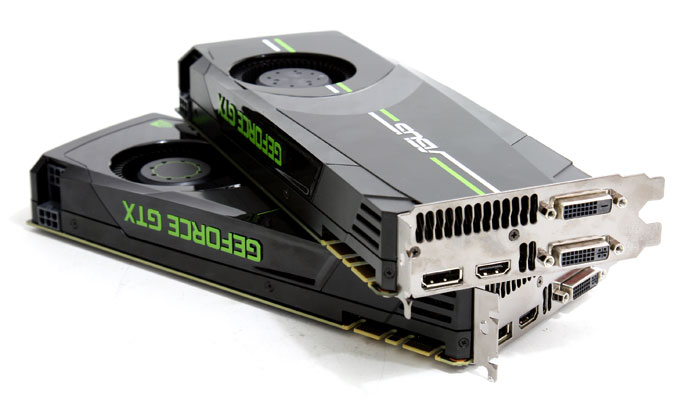Final Words & Conclusion
Final Words & Conclusion
Okay, let me spill the beans -- granted, SLI mode is darn expensive. But as always, it does work well with NVIDIA configurations.
Yeah... it is no surprise to see the GeForce GTX 680 perform the way it does. Ever since the release of the 400/500 series SLI performance with two cards has been great. You will run into some CPU limitations on cards like the GeForce GTX 680, especially with the older titles. But really, a CPU bottleneck is not a particularly bad thing as with a modern processor there's plenty enough for overall functionality. So with the older tiltes, instead of 150 FPS you get 130 FPS. The newer titles are all GPU limited and that's where that processor matters so much less.
Performance wise, very little negative can be said about the GeForce GTX 680 set up in SLI. Heat and noise will hardly go up depending on your configuration and should remain acceptable. If you can, please place the cards as far away from each other as possible, a special flexible SLI bridge is required for that though, like the one shown on page two of this article.
What we like very much is that the GeForce drivers will have a new feature, they can now automatically update AA and SLI profiles. Once you enable the feature the driver will contact NVIDIA on a regular basis, download profiles and will silently install them. That means when a new game is out, your driver will probably already have been updated in the application profiles segment, and support that game. Great idea, it saves you the hassle of waiting on, seeking and installing a new driver as the updated application profile will be enough to get you started in SLI.

Power consumption then, the two GPUs consume roughly 350 Watts, add to that the rest of your system (processor, chipset, peripherals) at say 200 Watts and you'll find yourself in the 600 Watt power consumption region when playing a hefty game. If you plan to overclock the CPU and GPUs, then make sure to add another 200W onto your PSU requirements. Keep that in mind okay? Our recommendation stands as it is, 750 Watts with SLI 680's. Hey, SLI is expensive, you are in the extreme high-end arena, it has never been any different.
Scaling with the more GPU stringent monitor resolutions starting at 1600x1200 and modern games you can gain 1.5x ~ 1.9x performance with two of these cards and that really is commendable. Bear in mind though, to be able to operate two or more cards in SLI mode you'll need a SLI compatible motherboard; most Intel X58, P67, Z68 or Z77 motherboards are SLI certified, some P55 motherboards as well. AMD's 900 series boards carry SLI support as well. Carefully make sure and check that out before opting for SLI and thus already purchasing a second card.
Driver compatibility -- In all our tests we had no driver issues whatsoever. All games worked straight out of the box and all games showed good performance scaling.
So there you have it, two GTX 680 cards set up in SLI will still cost you say 950 EUR and when prices settle maybe 900 EUR, for that money you'll gain a truckload of performance kicking your configuration into the highest gear performance wise compared to say a GeForce GTX 590. We'll admit it though, in these times that's just a heck of a lot of money.
With SLI you might run into some sort of small driver issue at one point in time, also you will consume a bit more power, however the power envelope of the 680 cards are pretty darn good. The flipside of the coin however is that the performance beats even the fastest single GPU based graphics card tested to date.
Whatever you preference might be, either way we doubt you'll regret the choice you will make as this certainly has been a satisfying experience from A to Z. SLI with the GeForce GTX 680? Sure, definitely recommended if you've got the dough to spend on something wicked.
Oh and what about 3-way SLI you might wonder? Hey -- relax, we have an article on that in the works as well.
Thanks go out to ASUS for supplying the 2nd GTX 680.
* Update - we noticed we goofed up by forgetting to insert 2-way Crossfire 7970 results, please find these results here if you like to compare a little. In our next SLI article we'll obvioulsy insert them as well.
- Leave/read comments on this product
- Sign up to receive an email when we publish new articles
- Or go back to Guru3D's front page.
